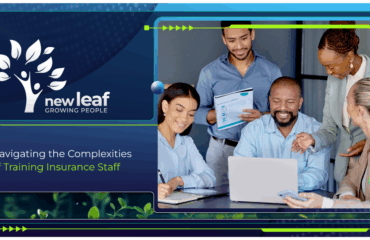
Implementing a training programme across an entire organisation can present significant challenges. The best way to mitigate those challenges is to invest in an effective learning management system (LMS) that can deliver a diverse range of courses to employees while allowing you to centralise your training programs in one convenient location. You would need an LMS that allows you to revise and update content easily, track learner progress and due dates, as well as evaluate their competencies and areas that still may need growth.
But which one do you choose? With almost 1,000 vendors available, picking the right platform can be daunting. Lots of shiny features and a cheap price don’t mean it will be right for you. An effective learning management system (LMS) engages your workforce, reduces training costs, and elevates skills to maximise productivity. But if your system isn’t optimal, it won’t deliver these benefits.
These are the questions you should be asking before choosing an LMS.
1. What Are Your Business and Training Needs?
The size of your company, stakeholder requirements, skills gaps, and the industry you’re in all influence which LMS you choose. For example, a large enterprise will need a flexible and scalable option to cater to different departments and knowledge levels, while a smaller firm may only need it for onboarding training. Companies in industries like healthcare would need a robust LMS that can deliver a fully adaptive blended learning experience.
What do you want to achieve through training? Will it primarily be mandatory activities (such as compliance or health and safety) or General Data Protection Regulation (GDPR) training? Are you focused on development needs such as leadership and management training, soft skills development, or digital upskilling?
You’ll also need to consider future needs, the impacts of business changes, and whether the LMS allows you to scale up or down to accommodate these.
2. Will the LMS Be Compatible With Other Systems?
Your LMS must seamlessly connect with other tech stacks, such as HR management systems (HRMS), to ensure consistency in learner data transfer between your LMS and HRMS. Other tools and platforms it needs to work with are customer relationship management (CRM) software, video conferencing, social learning platforms, and content authoring tools. This ensures enhanced, automated workflow efficiency and the exchange of vital information while providing a comprehensive view of learner engagement and performance.
The LMS should also be compatible with your learners’ devices, including personal devices such as laptops, tablets, and smartphones, and be available via different web browsers.
3. What Will the User Experience Be?
The LMS has to be user-friendly for administrators, lecturers, and learners. This includes being mobile responsive so content can be accessed on the go. Questions to ask are whether content can be customised by role and preferences and whether it can be personalised for each learner.
As an admin, you will want to customise the content to ensure the learning material remains relevant. Look for adaptable features and interactive activities that enhance teaching methods and encourage learners to participate in a multitude of learning experiences.
Being able to customise your LMS to reflect your organisation’s branding and visual identity (such as brand logo and corporate colours, for instance) creates familiarity and continuity, fostering a more cohesive learning environment while aligning with your organisational culture.
4. How Will eLearning Content Development Work?
An important thing to look for in a learning platform is whether it offers the ability to create training content. Some LMSs are simply course content distributors, while others come with eLearning content development and content authoring tools that allow course designers and trainers to develop their own unique content.
Some LMS vendors offer either built-in or separate course-creation tools for purchase, while some offer no authoring tools whatsoever, and here, you’ll have to rely on third-party course materials. In the latter case, you have to ensure the supplier adheres to international SCORM (Sharable Content Object Reference Model) standards so the LMS “plays well’ with other eLearning software.
5. What Are the Cost Considerations?
LMS vendors offer different pricing models, each affecting the range and type of services included. Your training needs, budget, and business goals will determine which one is right for you.
The most popular learning platform licensing models are:
- Subscription-based licences allow you to gain access to the LMS platform for a certain period — usually monthly or annually — for a set licence fee.
- Enterprise-wide licences that allow an unlimited number of authorised users to access the platform.
- Active user/seat-based licences, where charges are based on the number of users actively using the platform during a billing cycle, offering flexibility and scalability as usage increases or decreases.
- One-time licensing fee where you make a single upfront payment to lock in a permanent LMS licence.
6. How Do You Choose the Right Vendor?
Start by researching potential candidates’ reputations. Look for customer feedback and reviews, the company’s track record, and industry presence. Enquire about the nature of their customer support, data protection measures, and whether they offer regular updates, training, resources, and detailed documentation on each feature and plugin.
Ask to what extent they support Learning Technologies Interlincs (LTI), which allows learning technology products to communicate and share data about learner experiences with each other. Ensure the LMS supports eLearning content types such as SCORM, as well as common document and media types like PDFs, Word documents, Excel spreadsheets, PowerPoint slides, and videos.
Finally, ask how easy it is to generate reports and what data is included. Try demos to gauge whether the LMS is user-friendly and will meet your needs. During this stage, engage key stakeholders and end users to gather diverse perspectives before you decide.
Ready To Choose an LMS?
Ultimately, one of the most important factors when choosing a learning management system is your relationship with the vendor. You’re looking for a partner — such as New Leaf Technologies — who can go on the training journey with you and help you adjust, update, troubleshoot, and excel as you focus on upskilling and reskilling your workforce.




